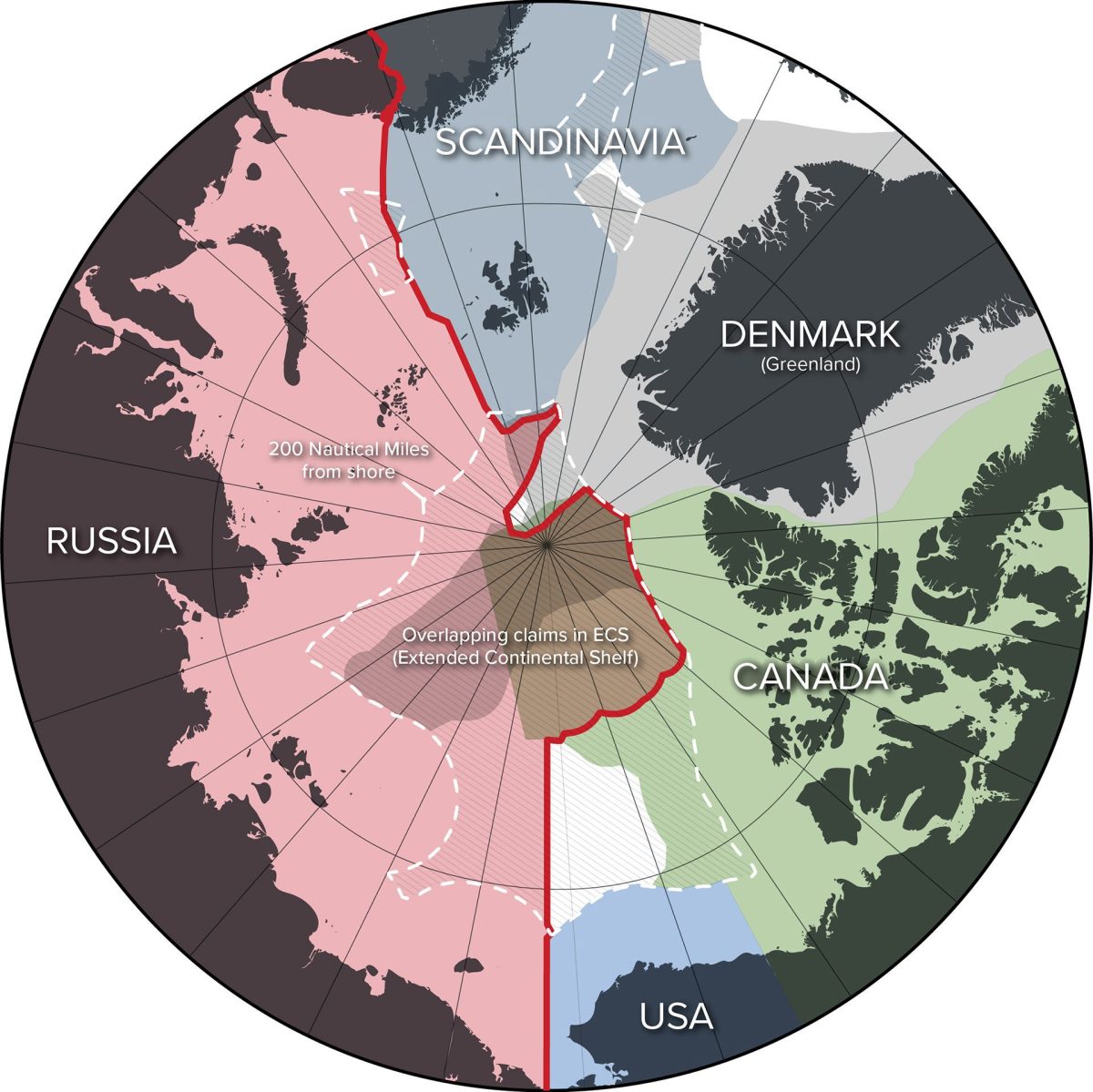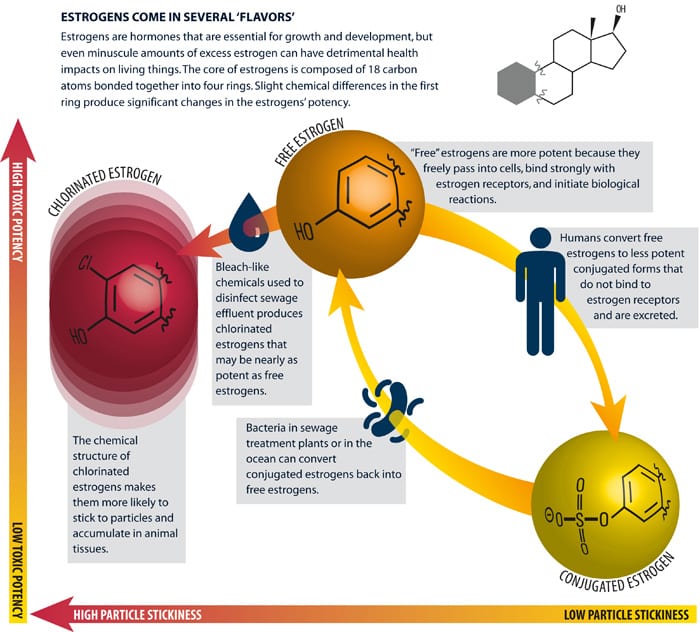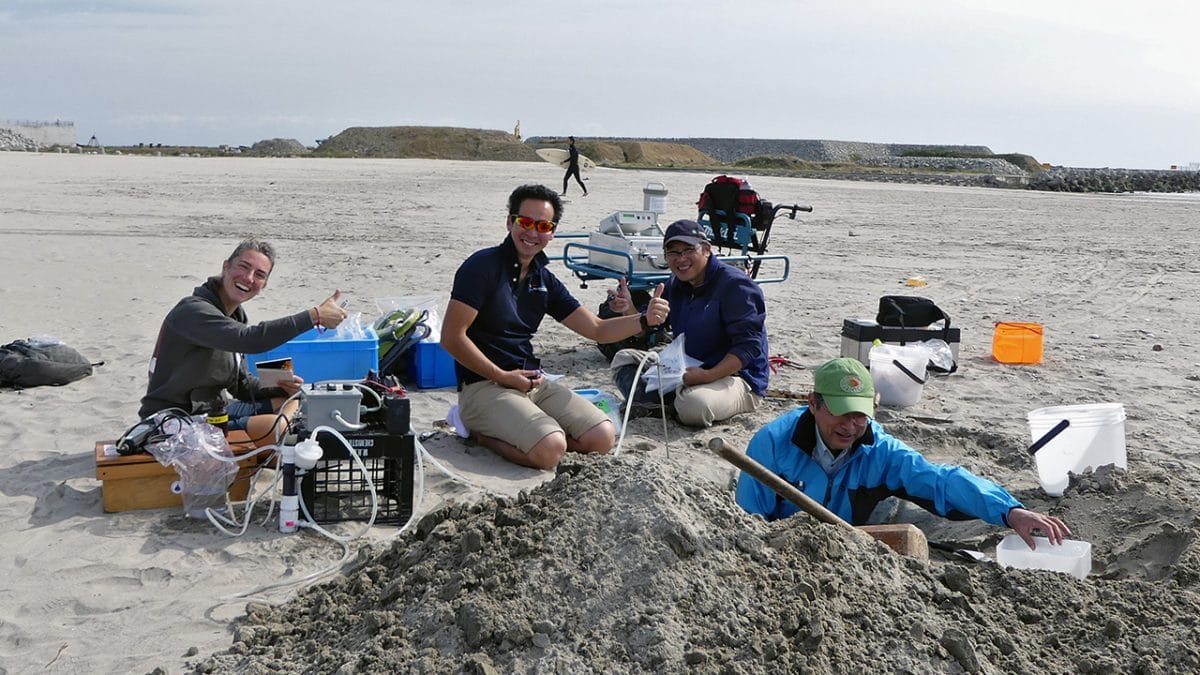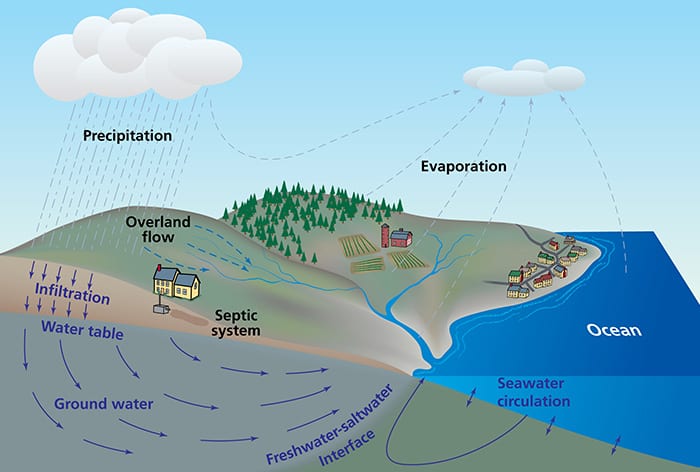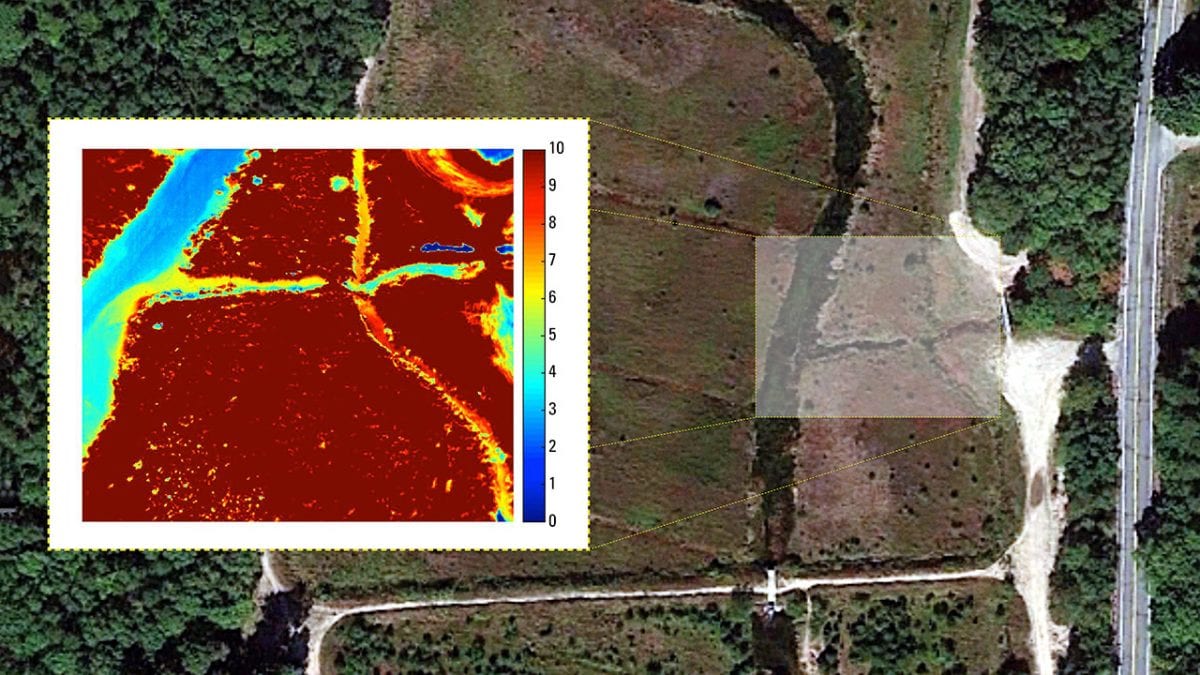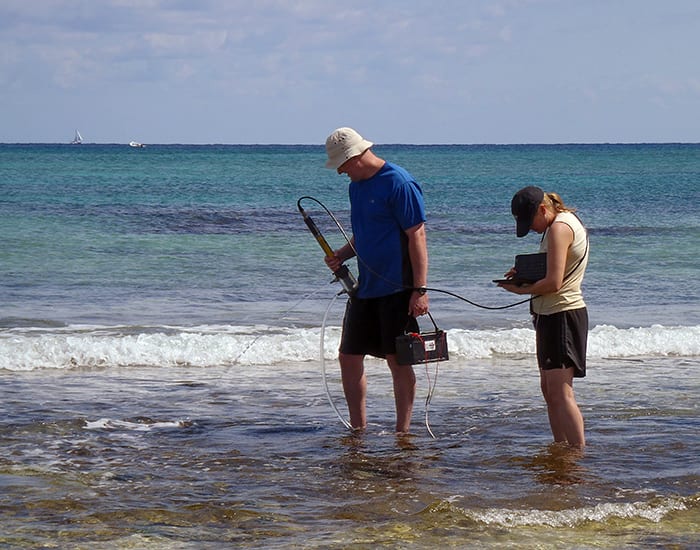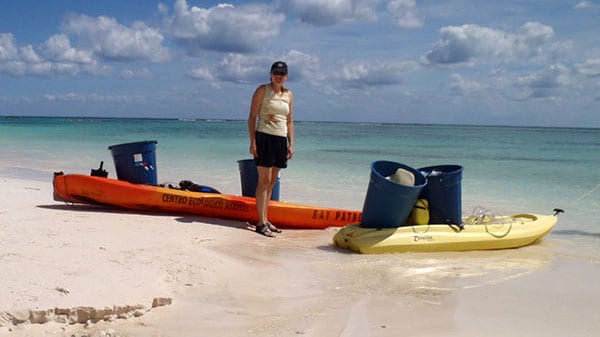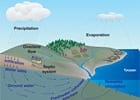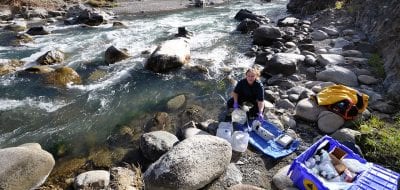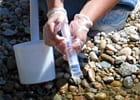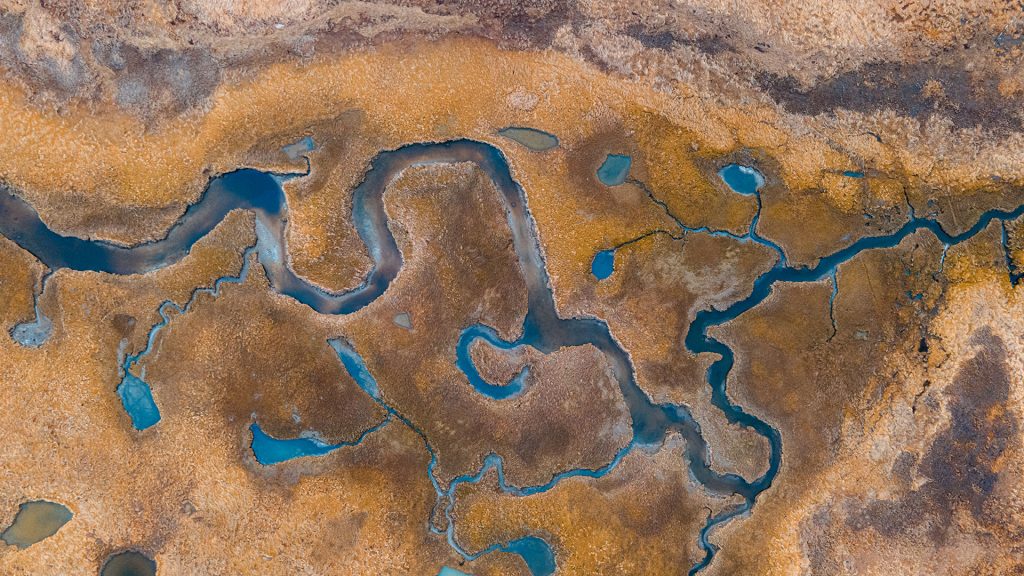
WHOI Assistant Scientist Julia Guimond conducts groundwater sampling at the Wells National Estuarine Research Reserve in Wells, Maine. (Photo by Brady Clark, Woods Hole Oceanographic Institution)
What is groundwater?
Water is in constant motion, moving from one location to another via a variety of processes: evaporation into the atmosphere, precipitation to return to Earth, infiltration into the soil, and evapotranspiration through plants. This cycle includes vast stores of both saltwater and freshwater, most of which occurs in forms we can see and experience directly—oceans of saltwater and lakes, rivers, and other sources of surface freshwater. But some water remains hidden underground. When water from rainfall or snowmelt seeps into the soil and underlying rock, it becomes groundwater.
Groundwater does not form underground lakes or rivers. Instead, it percolates through pores in soil and rock, filling available openings. Large underground areas of porous rock are called aquifers. Water within them flows naturally to feed streams or springs or can be pumped out for human use. Like surface water, groundwater can flow but does so more slowly.
Why is it important?
Groundwater provides the main source of drinking water for billions of people worldwide. Tapping into this resource has allowed cities to spring up in deserts and other areas with little rainfall or surface flow. It also supplies more than 40% of the water used for irrigation.
Many ecosystems also rely on groundwater to thrive. Many of these groundwater-dependent ecosystems occur in drylands—areas that receive little rainfall—making groundwater the sole source of moisture during most of the year. These ecosystems are often biodiversity hotspots, home to rare and endemic species. Preserving groundwater levels is an essential part of protecting these essential habitats.
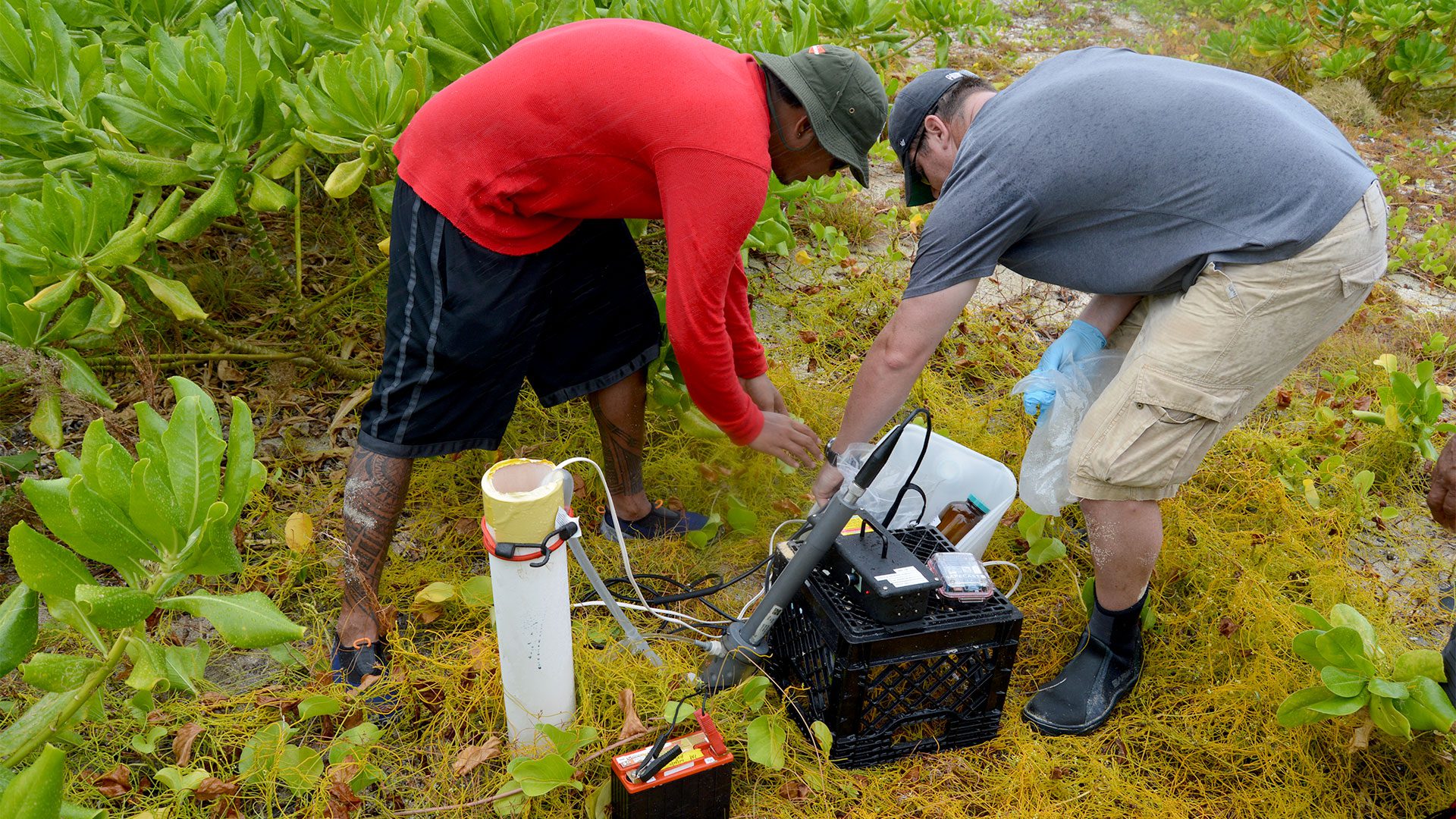
Benedict Yamamura and Paul Henderson testing groundwater well radiation. (Photo by Ken Buesseler, Woods Hole Oceanographic Institution)
What kinds of issues affect groundwater?
By far the biggest issue is overuse of groundwater resources. Pumping can remove large amounts of water over a short period of time, but recharging the underlying aquifer generally takes much longer. As groundwater levels drop from overuse, wells can run dry, prompting the need to dig deeper wells. When those aquifers also supply water to streams, streamflow can slow or stop, harming local ecosystems.
Human activities can contaminate groundwater with pathogens or a variety of agricultural and industrial chemicals. Climate change also plays a role. Global heating increases evapotranspiration by plants, which draw water from the ground and eventually release it into the atmosphere. Temperature increases also change the chemistry of groundwater, allowing minerals that would otherwise remain in rock to dissolve in the water. Warming affects groundwater up to 100 meters (328 feet) deep.
As groundwater levels drop, so does the overlying landscape. This sinking, called subsidence, affects cities and agricultural areas around the globe. When it happens along coastlines, subsidence increases flooding associated with sea level rise. Along the coastline, a drop in the freshwater table allows saltwater to infiltrate, creating brackish groundwater that limits use for drinking and irrigation.
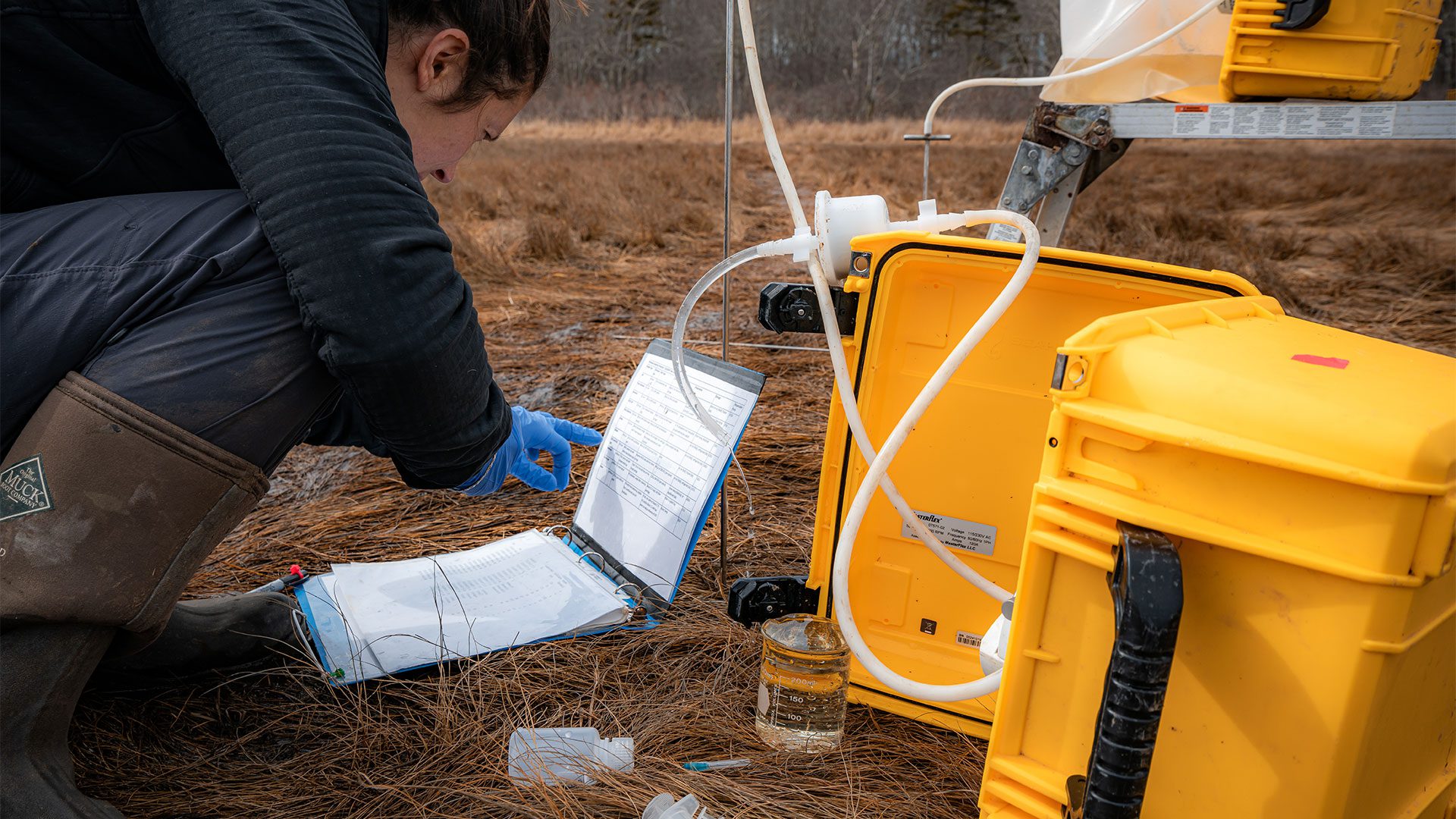
Assistant Scientist Julia Guimond recording information as peristaltic pump pulls groundwater from the Wells National Estuarine Research Reserve.(Photo by Brady Clark, Woods Hole Oceanographic Institution)
Can groundwater issues be fixed?
Recharging aquifers can take centuries, but people are tackling dropping groundwater levels in a variety of ways. Some areas have begun to pump highly treated wastewater underground in order to replenish dwindling groundwater sources. Others have used landscape architectural design to collect runoff and funnel it into wetlands that filter pollutants and allow the water to seep underground. These approaches help address many issues associated with groundwater depletion by providing a continuous supply of water for irrigation, drinking, and other forms of consumption. Such efforts also reduce subsidence.
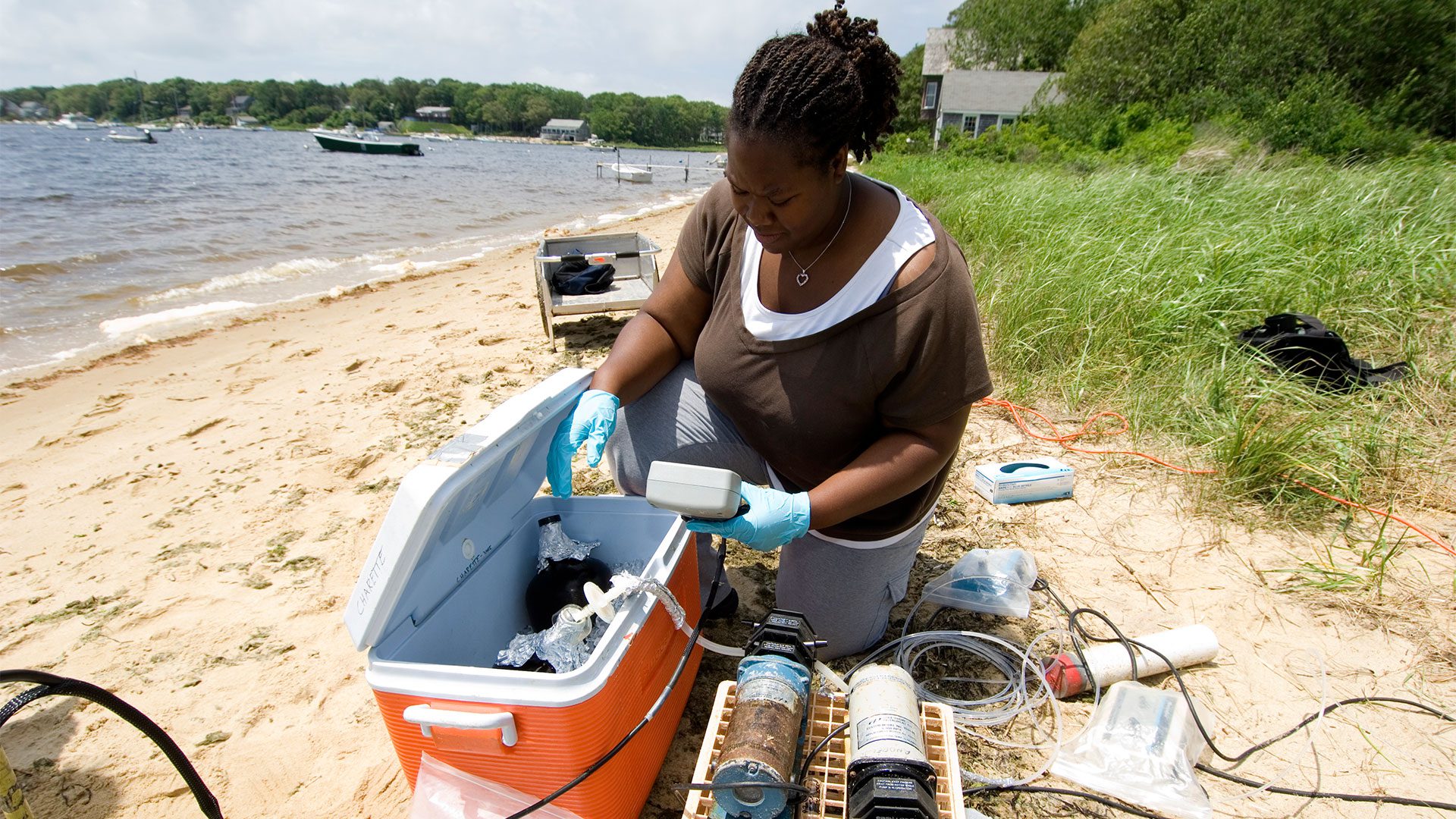
Summer student fellow DeAnne McCadney collects groundwater samples at Waquoit Bay. (Photo by Tom Kleindinst, Woods Hole Oceanographic Institution)
How do scientists study groundwater?
Around the world, scientists use networks of monitoring wells. These provide a fine-tuned look at underground water levels, allowing researchers to estimate how quickly aquifers refill, whether loss of groundwater will impact streamflow, and whether nearby wells are likely to run dry.
Scientists also rely on data from Gravity Recovery and Climate Experiment (GRACE), which ran from 2002 to 2017. Twin satellites orbiting Earth on opposite sides of the planet constantly measured small changes in the distance between them, which reflected changes in Earth’s gravity. Larger amounts of water—including groundwater—increased the gravitational pull, which reduced the distance between satellites a tiny bit. Lower amounts of water reduced that pull, allowing the satellites to shift farther apart. Outfitted with sensitive instruments to detect these minute changes in gravity, GRACE satellites recorded changes in both surface and groundwater over 15 years. The resulting data allowed scientists to map groundwater levels around the globe to track discharge and recharge of aquifers.
Dao, P.U. et al. The impacts of climate change on groundwater quality: A review. Science of the Total Environment. Vol. 912. February 20, 2024. doi: 10.1016/j.scitotenv.2023.169241.
Dika, I.R. and M. Rimac. The role and important of plant purification systems in the ecological approach to landscape design. IOP Conference Series: Earth and Environmental Science. Vol. 879. 2021. doi: 10.1088/1755-1315/879/1/012033.
Jasechko, S. et al. Rapid groundwater decline and some cases of recovery in aquifers globally. Nature. Vol. 625. January 25, 2024. doi: 10.1038/s41586-023-06879-8.
Jasuja, P. and E. Bhatnagar. Planning strategies for stormwater management for urban areas: Lessons for India. Journal of Global Resources. Vol. 7. 2021. doi: 10.46587/JGR.2021.v07i02.011.
Job, C. A Mid-Atlantic managed aquifer recharge regulatory process supports multi-purpose water reuse. Groundwater Monitoring & Remediation. Vol. 44. Winter 2024. doi: 10.1111/gwmr.12630.

